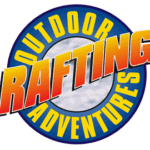"Mother Nature is always speaking. She speaks in a language understood within the peaceful mind of the sincere observer." - Radhanath Swami
The sincere observer is what we train all our guides to be, but you don't have to go through extensive training to be able to hear what the water is telling you! Reading the river is one of the best ways to ensure a fun and safe trip. It's all about being aware of how the water is moving so you can ride it with ease, and not have to work as hard to get to the end of your trip. There are a few river reading basics we can go over today, and your guide will be happy to expand upon these things when you're on your rafting trip.
The current is the water moving downstream. We’re sure you've heard the saying, "the path of least resistance," and this is about flowing water. It always looks for the most direct, clearest path as it's moving. The speed of the water is influenced by the volume of water, which is why rivers move faster in the spring when snow melts - you have more water trying to move through the same space. This is also true for narrow rivers, because of the greater amount of water trying to get through a smaller area. In narrower rivers, water "piles up", causing turbulence and the rapids we love riding!
In the ocean, you can duck under waves and wait it out in the calmer water thanks to water's laminar flow. This applies to all bodies of water, and means that faster water is near the surface of the water, while slower moving currents are near the bottom of the riverbed because of the water's friction. Water is also slower around river banks for the same reason.
Your guide will be well versed in reading the river, but here are more things you may find helpful on your trip. These are commonly listed as "river hazards" but think of them more in terms of things to observe as you go, so you can make better choices when paddling, increasing the ease of your rafting trip.
